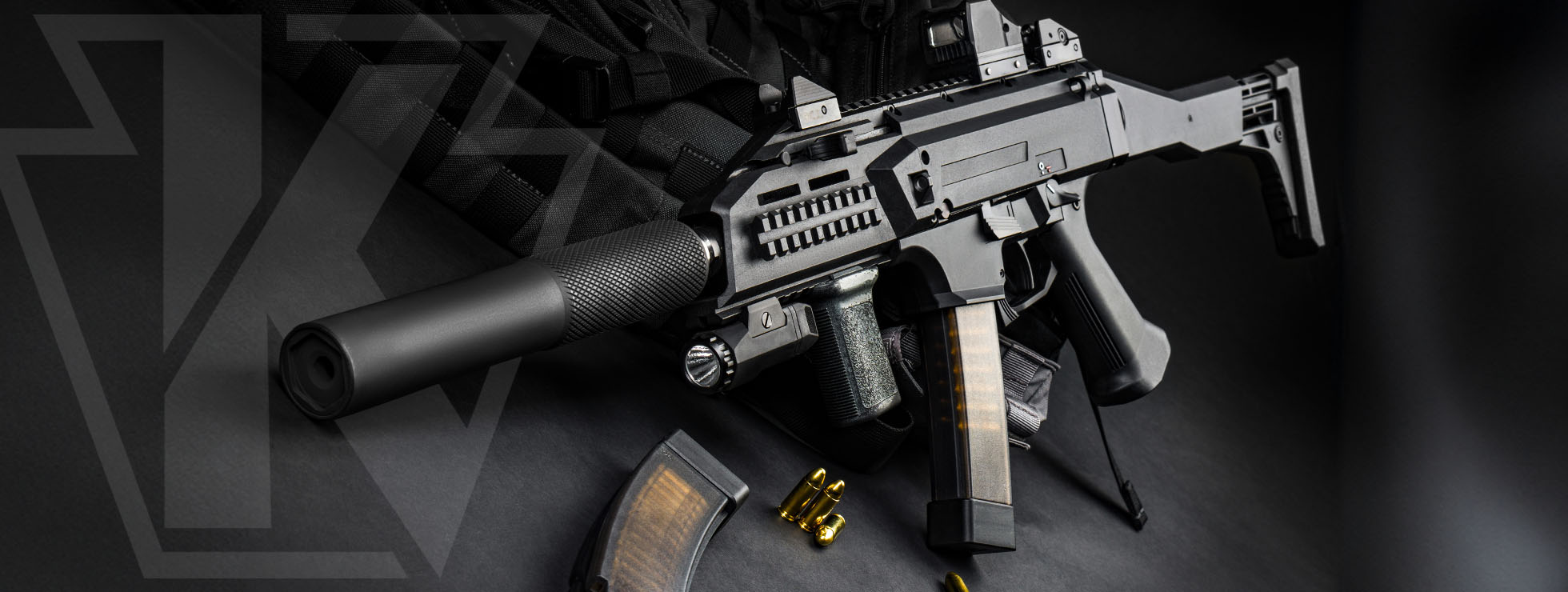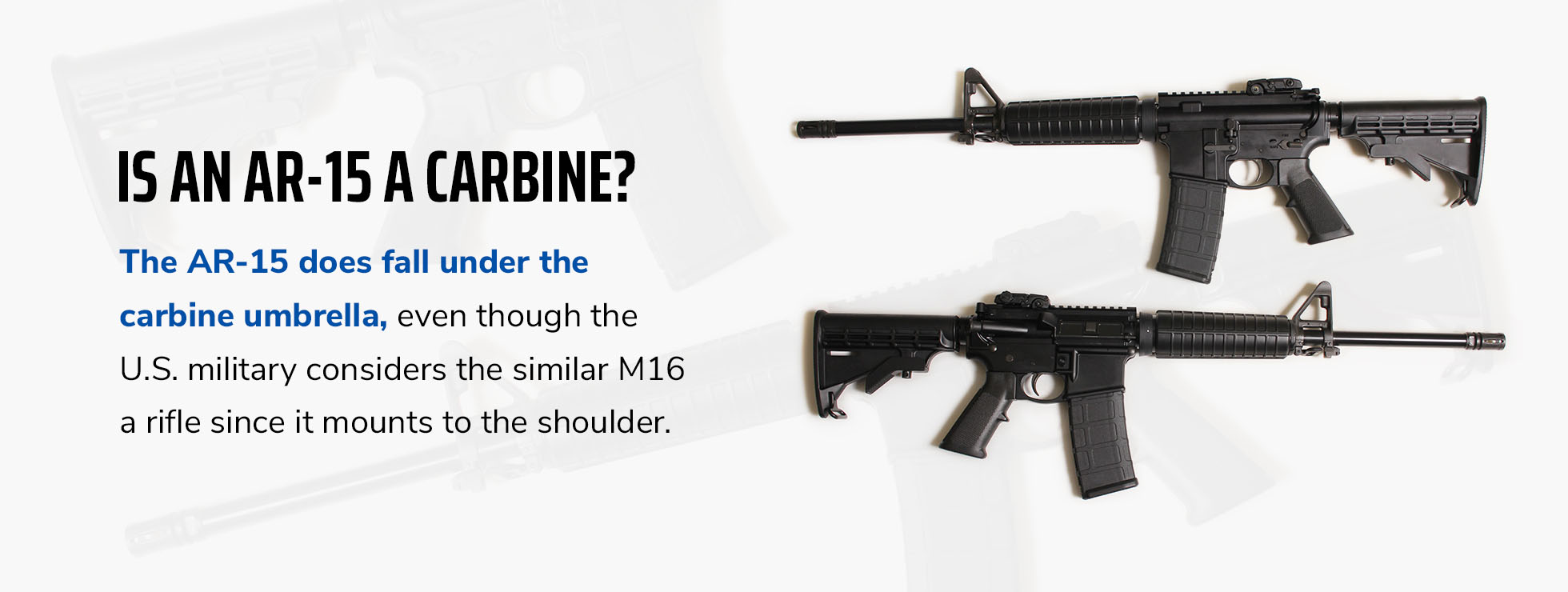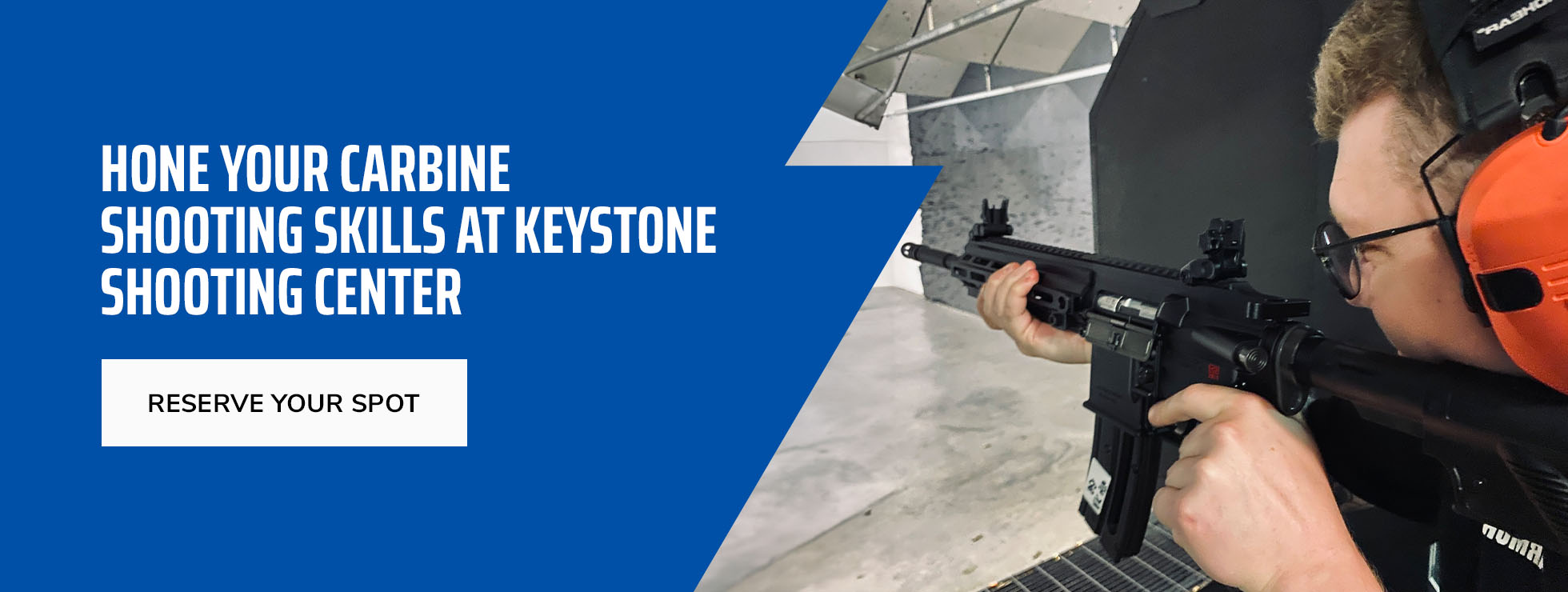
A carbine is a lightweight, short-barreled variation of an existing rifle model. These qualities make it more portable and easier to carry than standard long-barreled rifles. A carbine often uses the same caliber as the rifle it was based on, but this isn’t always the case. Determining which rifles are carbines can be challenging, and there isn’t one blanket definition that applies to every circumstance.
There is some debate regarding which group offers more precision. Many believe rifles provide more accuracy, but this ultimately depends on the individual marksman. A new shooter may find a carbine more accurate than a traditional rifle, as its compact design and shorter barrel can make it easier to control.
Carbines are typically issued to high-mobility, noncombat, logistics and artillery personnel who don’t require full-sized rifles. However, many front-line soldiers also use carbines to offset the weight of their other issued equipment. Learn more about the history and different types of carbines in this guide.
What Is the Purpose of a Carbine?
Looking at the carbine’s origins can shed some light on why the firearm was developed. Traditionally, cavalries — soldiers who fought on horseback — fought in wars. However, it was difficult for them to aim in close combat with long-barreled guns, like muskets and rifles, while mounted on horses. This spurred the invention of a shorter, more lightweight rifle, known as the carbine.
Christopher Miner Spencer from Connecticut invented and patented the carbine in 1860. Its buttstock contained a magazine holding seven cartridges, which could be fired in about 18 seconds.
Over time, advancements in technology improved the accuracy of these firearms. Today, the military continues to use the M4 and other carbines for close-quarters combat. Keep in mind that, like standard long-barreled rifles, carbines aren’t exclusive to law enforcement or the military. It’s perfectly legal for United States citizens to purchase and own these firearms.
Is a 16-Inch Rifle a Carbine?
Yes — a rifle with a barrel length shorter than 20 inches is typically classified as a carbine. If the barrel is less than 16 inches, it’s also considered a short-barreled rifle (SBR) and is regulated by the National Firearms Act (NFA).

Is an AR-15 a Carbine?
The AR-15 does fall under the carbine umbrella, even though the U.S. military considers the similar M16 a rifle since it mounts to the shoulder. The AR-15 is less powerful than other rifle options. However, its lightweight nature, affordability and ease of use for small-framed individuals make it ideal for both civilians and military personnel.
Eugene Stoner, who also designed the M16, invented the AR-15 in the 1950s while working for ArmaLite. The AR-15 was a downsized version of the AR-10. It was manufactured with aluminum and plastic to decrease its overall weight.
Other Types of Carbines
Aside from the AR-15, there are a host of other carbines on the market. Let’s look at some examples.
1. M1 Carbine
Manufactured in the 1940s, the M1 Carbine is a lightweight, semiautomatic firearm issued in the U.S. military during World War II. It was designed to give line-of-communications and noncombat troops a more robust means of defense than a submachine gun or pistol. Chambered for .30 pistol-weight ammunition, it offered high accuracy without the cost, weight or recoil of a full-power rifle.
The M1 was easier for small-framed people and less experienced soldiers to fire. It was also more convenient for officers equipped with weapons, radios and other gear to carry. Additionally, artillery and mortar crews, drivers and tankers were issued M1 Carbines to substitute the larger, heavier, full-size M1 Garand rifle.
2. M4 Carbine
Chambered in 5.56mm, the M4 Carbine is a shorter, lighter version of the M16A2 rifle. Developed in the 1980s, it allowed soldiers operating in close quarters to engage long-range targets with high precision and speed.
This gas-operated, shoulder-fired gun includes a detachable carrying handle and collapsible stock. Today, the M4 Carbine is the standard issue for most U.S. military units.
3. AGM-1 Carbine
The AGM-1 is a bullpup semiautomatic carbine produced in Italy in the 1980s. It was initially intended as a select-fire submachine gun for military and police forces. The AGM-1 Carbine is chambered for .45 ACP and 9×19mm Parabellum.
Production of the AGM-1 Carbine was brief, and it was also banned from sale in the U.S. at the time. This firearm is incredibly rare, with less than 100 models having been made.
4. Type 44 Carbine
Developed in 1911 before World War I, The Type 44 Carbine is a Japanese cavalry rifle. It was influenced by the Arisaka Type 38 Cavalry Rifle.
The firearm includes a hook directly below the front sight, along with a compartment in the buttstock to store a cleaning rod. Its bayonet folds backward to lock underneath the barrel. The Type 44 Carbine was chambered for the 6.5×50mm Arisaka cartridge.
5. G13 Carbine
The G13 was developed by the Georgian Armed Forces Science and Technology Center in 2012. Chambered in 5.56×45mm NATO, it was designed to replace the M4 Carbine used by the Georgian Armed Forces. It aimed to provide an improved mounting kit, optics, iron sights and other elements not present in the M4.
The G13’s configuration largely resembles the M4, though it differs in durability and firing mechanics. It features a short-stroke piston gas system combined with enhanced rear components. The G13 also minimized the risk of common M4 issues like jamming and overheating after a certain number of rounds.
6. Jungle Carbine
The Royal Ordinance Factory developed the Rifle No. 5 Mk I in the 1940s. It was a response to the need for a shorter, lighter variation of the British Lee Enfield No. 4 Mk I rifle for the European Theater of Operations. The bolt-action rifle was unofficially nicknamed the “Jungle Carbine” for its use in jungle warfare.
The full-size No. 4 Mk I weighed nearly 10 pounds and was 44 inches long, making it difficult to grapple with in hot, humid jungle combat. Chambered in .303 British, the lighter and handier Jungle Carbine featured a fully loaded weight of 8 pounds and an overall length of 39.5 inches.
Hone Your Carbine Shooting Skills at Keystone Shooting Center
At Keystone Shooting Center, we provide plenty of opportunities to test out your carbine firing precision. Through our basic carbine training courses, you can learn essential skills like AR-15 operation, safety and maintenance.
Additionally, you can rent or purchase carbines from our broad inventory of firearms. Whether you’re looking to get your hands on an AR-15 or refine your shooting technique, Keystone Shooting Center has all the resources you need. Browse our firearm selection or reserve your spot for one of our carbine classes today!


 Search
Search 
